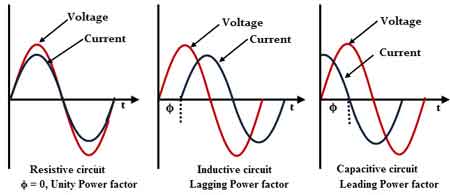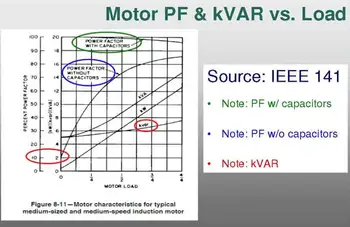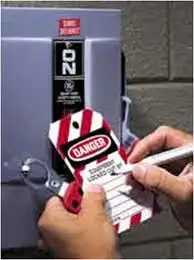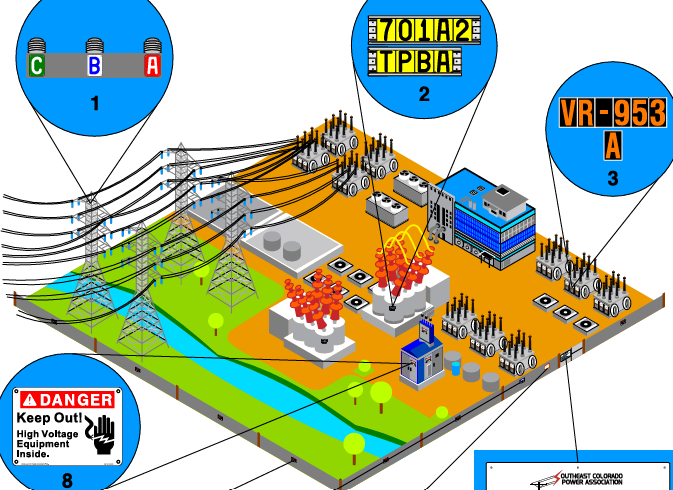What is Unity Power Factor Explained

Power Factor Training
Our customized live online or in‑person group training can be delivered to your staff at your location.

- Live Online
- 6 hours Instructor-led
- Group Training Available
Download Our OSHA 3875 Fact Sheet – Electrical PPE for Power Industry Workers

- Follow rules for rubber gloves, arc-rated PPE, and inspection procedures
- Learn employer obligations for testing, certification, and training
- Protect workers from arc flash and electrical shock injuries
What is unity power factor? In AC circuits, it means zero reactive power, zero phase angle, maximum efficiency, real equals apparent power, ideal load, minimized losses, and optimal power triangle alignment for generators and transformers.
What Is Unity Power Factor?
Unity power factor is zero phase angle: no reactive power, real equals apparent power, boosting efficiency.
✅ Occurs when current and voltage are perfectly in phase (cos phi = 1)
✅ Eliminates reactive power flow and minimizes I^2R losses
✅ Improves grid stability, transformer and generator utilization
Unity power factor occurs when the voltage and current waveforms in an AC electrical circuit are perfectly aligned, meaning that all electrical power supplied by the power source is effectively used by the load. Achieving this state ensures that the real power consumed by the system equals the apparent power, without any energy being wasted in reactive components. Understanding it is essential for anyone managing power systems because it directly affects system efficiency, energy savings, and equipment sizing. In industrial applications, maintaining a unity PF minimizes energy costs and enhances the performance of electrical equipment. For a quick refresher on the mathematical definition, see the concise explanation in this power factor formula guide for context.
Power Quality Analysis Training
Request a Free Power Quality Training Quotation
In an electrical system, power can be divided into three components: real power, apparent power, and reactive power. Real power is the actual energy consumed by a load and is measured in watts (W). Apparent power represents the combination of real power and reactive power and is measured in volt-amperes (VA). Reactive power arises from energy stored in components like inductors and capacitors, which causes current and voltage to fall out of phase. This type of power is measured in volt-amperes reactive (VAR). Unity PF (with a value of 1) is achieved when all the energy supplied by the power source is used efficiently by the load, leaving no reactive power. In this case, real power equals apparent power, maximizing system efficiency. Engineers often refer to step-by-step methods for calculating PF to validate measurements in complex loads.
Sign Up for Electricity Forum’s Power Quality Newsletter
Stay informed with our FREE Power Quality Newsletter — get the latest news, breakthrough technologies, and expert insights, delivered straight to your inbox.
The unity power factor (PF = 1) occurs when the voltage and current waveforms in an AC circuit are perfectly in phase, meaning that all the power supplied by the source is being used effectively by the load. In this case, the real power (measured in watts) is equal to the apparent power (measured in volt-amperes), and there is no reactive power (measured in volt-amperes reactive, or VAR). When assessing systems near PF = 1, power factor calculation examples help illustrate the effect of small phase shifts on reactive power.
Key Points:
- Real Power (P): The actual power consumed by the load, measured in watts (W).
- Apparent Power (S): The product of the root mean square (RMS) voltage and RMS current, measured in volt-amperes (VA).
- Reactive Power (Q): The power that oscillates between the source and the reactive components (like inductors and capacitors) of the circuit, measured in VAR.
Formula:
Power Factor is defined as:
Where ϕ is the phase angle between the voltage and current. For a unity power factor, If you know voltage, current, and phase angle, an online power factor calculator can quickly compare real and apparent power values.
Importance of Unity Power Factor:
Efficiency: A unity PF indicates that the electrical system is operating at maximum efficiency since all the power is being converted into useful work.
Reduced Losses: Higher PF reduce losses in the electrical distribution system, leading to lower energy costs.
Equipment Sizing: Systems with a unity PF require smaller transformers and conductors, optimizing the design and reducing costs.
Applications: Unity PF is desired in many applications, particularly in industrial settings, to minimize energy costs and improve the performance of electrical equipment. Where PF lags due to inductive loads, targeted power factor correction strategies can restore efficiency without oversizing equipment.
One of the most significant benefits of achieving a unity PF is the increased efficiency of the electrical power supply. When the PF is high, electrical losses in the system are minimized, leading to lower energy costs and reduced waste. Additionally, achieving unity PF reduces the load on the power supply, which in turn reduces the size of transformers, conductors, and other electrical components. This makes it particularly important in industries where large-scale energy consumption is common, as reducing system inefficiencies can lead to considerable cost savings.
Moreover, a unity power factor also contributes to better equipment performance and a more reliable power supply. Equipment like motors, generators, and transformers can operate more effectively at a unity PF, avoiding the overheating and inefficiency often caused by a lower PF. A poor PF increases the apparent power, requiring the power supply to work harder to meet the demand. In contrast, a system operating with a unity PF ensures that the power supply is optimized, and the electrical power provided is fully utilized. This is especially relevant to rotating machines, where motor power factor characteristics vary with load and influence thermal performance.
In energy storage systems and other power-sensitive applications, maintaining a unity PF can prevent disruptions, enhance overall system stability, and avoid excessive wear on equipment. For businesses, this means fewer maintenance requirements and more consistent performance from power-dependent machinery. During commissioning and maintenance, technicians use practical methods to find PF so that control settings and protections are tuned correctly.
Achieving a unity power factor is crucial for maximizing the efficiency of an electrical system. It not only reduces energy losses and operational costs but also optimizes equipment performance and extends the lifespan of electrical components. By ensuring the real power consumed matches the apparent power supplied, businesses and industries can benefit from a more reliable, cost-effective, and efficient electrical power system.
FREE EF Electrical Training Catalog
Download our FREE Electrical Training Catalog and explore a full range of expert-led electrical training courses.

- Live online and in-person courses available
- Real-time instruction with Q&A from industry experts
- Flexible scheduling for your convenience







